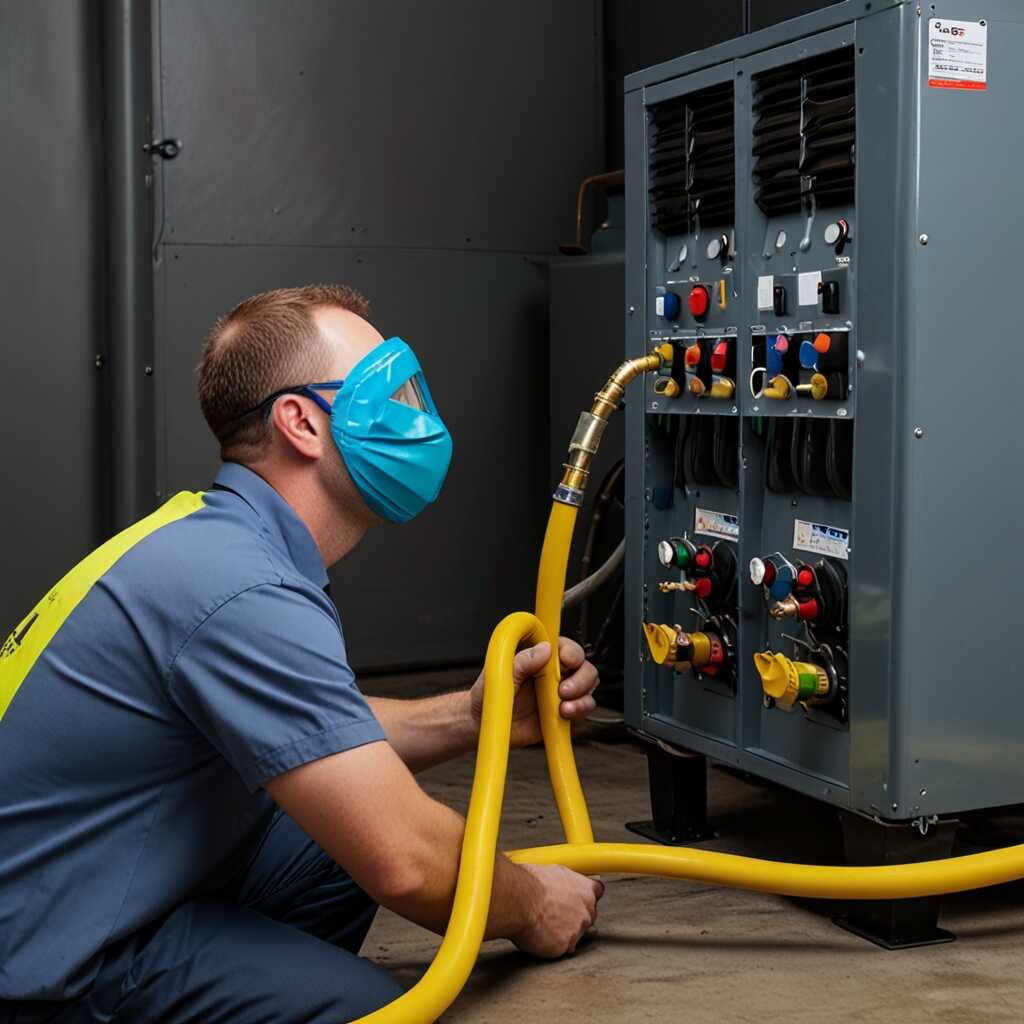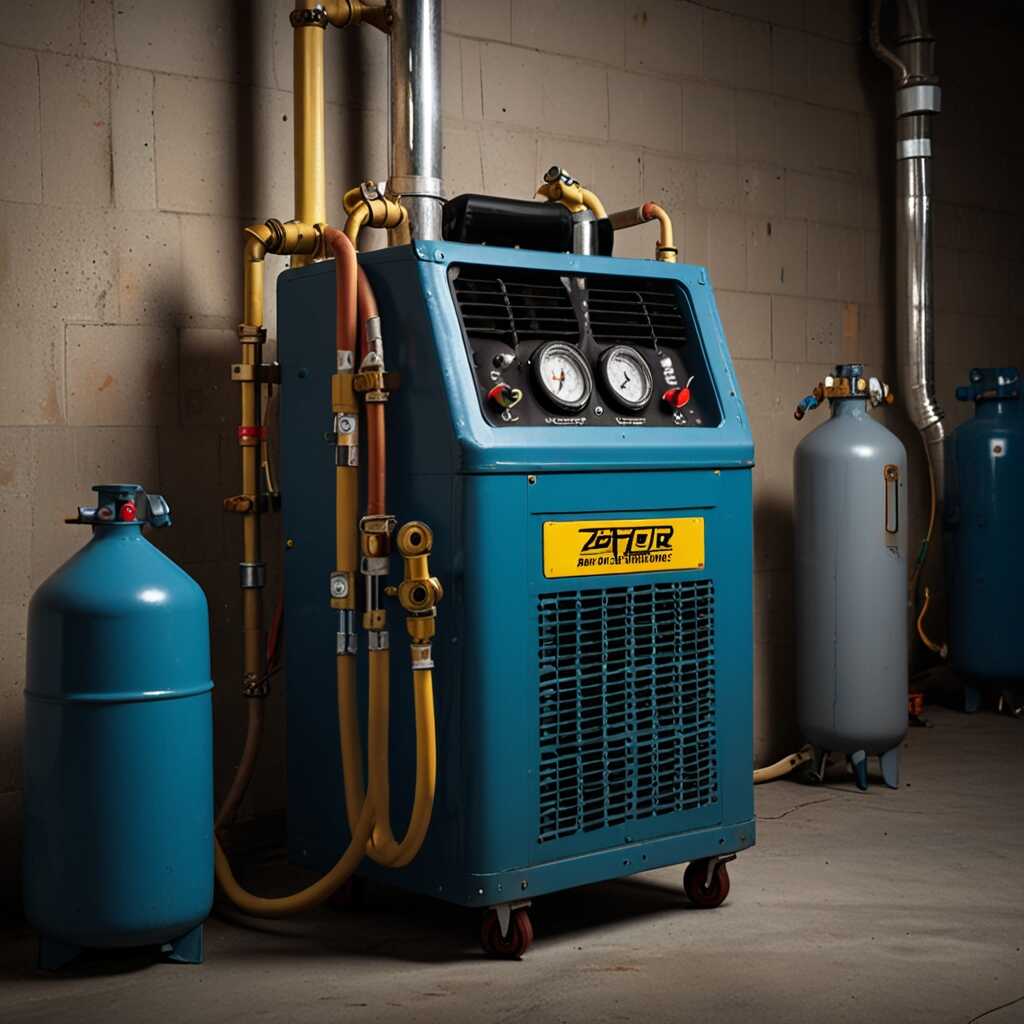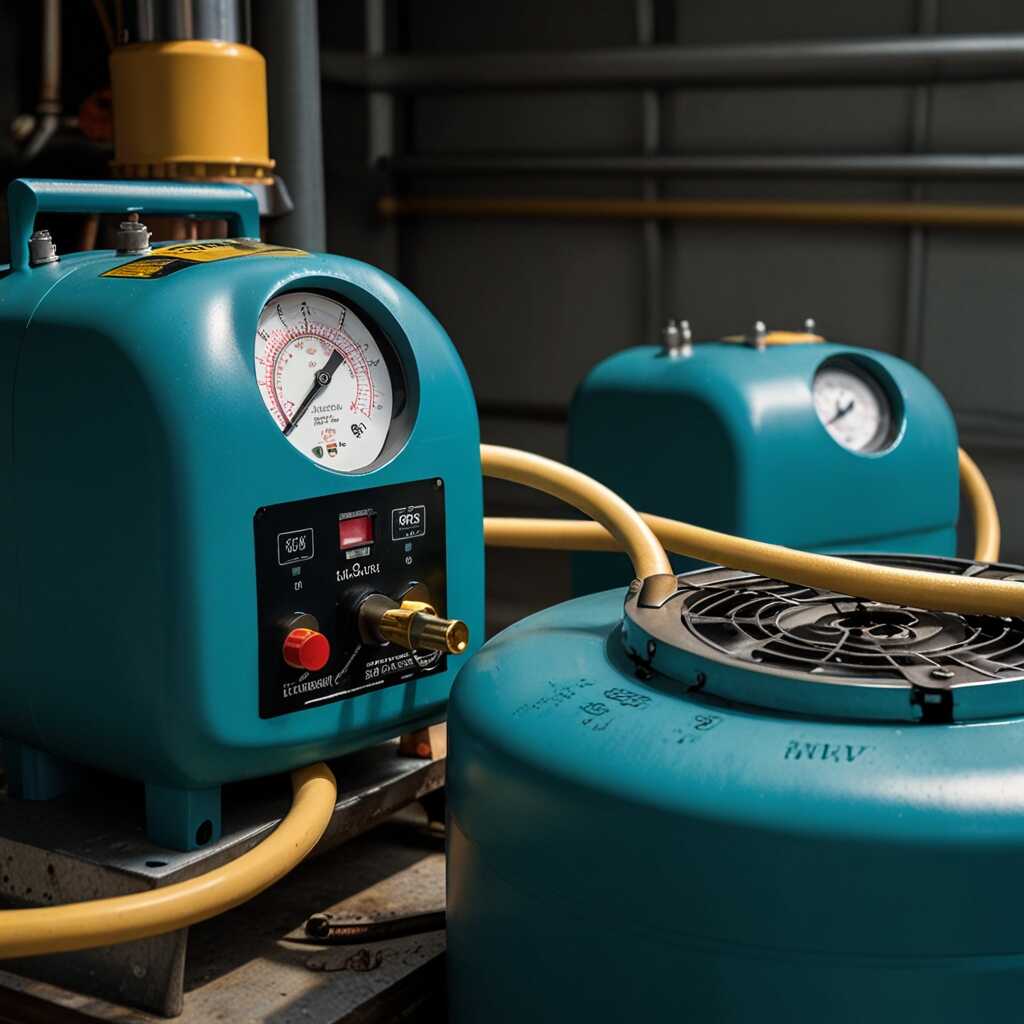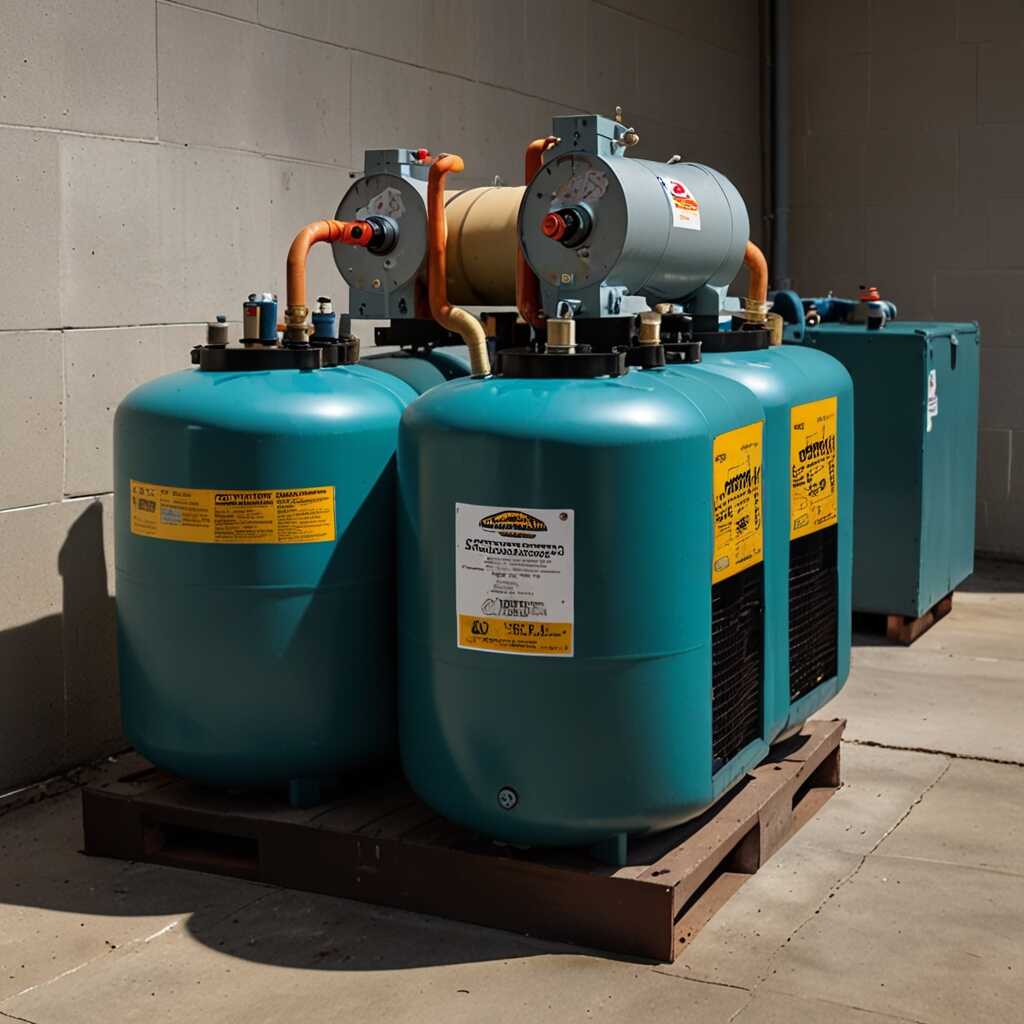Understanding how sound-dampening technology reduces noise in refrigerant recovery machines is crucial for HVAC professionals. This technology plays a significant role in creating quieter working environments while improving efficiency and safety. Refrigerant Recovery Pro offers valuable insights into the advantages of these innovations. By implementing sound-dampening solutions, HVAC technicians can enhance operational comfort and meet regulatory noise standards effectively.
Overview of Refrigerant Recovery Machines and Their Role in HVAC
Refrigerant recovery machines are specialized devices designed to remove refrigerant from HVAC systems in a safe and efficient manner. These machines are essential for ensuring that refrigerants are properly managed and recycled, significantly reducing their environmental impact. In HVAC systems, these machines enhance energy efficiency by maintaining proper refrigerant levels, ensuring optimal system performance. Experts estimate that by 2025, over a million refrigerant recovery machines will be operational, underscoring their critical role in professional HVAC settings.
Key Features and Benefits of Refrigerant Recovery Machines
Refrigerant recovery machines include essential features such as robust compressors, precise recovery gauges, and durable construction to ensure reliability and efficiency. When selecting a refrigerant recovery machine, consider its ability to handle various refrigerants while providing excellent performance. These machines are designed to meet regulatory standards, which enhances their value in maintaining compliance. Many machines also offer built-in diagnostic tools to aid technicians. Research shows that effective refrigerant recovery can improve the overall energy efficiency of HVAC systems significantly.
Consequences of Noise Pollution from Recovery Equipment
Noise pollution from refrigerant recovery machines significantly affects workplace productivity and community well-being. High noise levels can cause distractions and fatigue, reducing the efficiency of HVAC technicians. According to research, machines often produce noise levels ranging from 70 to 100 decibels. This poses potential health risks and complaints from nearby residents. Effective noise reduction technologies, such as sound-dampening materials and vibration isolators, can minimize these adverse effects, creating a more comfortable work environment.
Benefits of Sound-Dampening Technology in HVAC
Sound-dampening technology is essential for enhancing the performance of refrigerant recovery machines in HVAC applications. These technologies help reduce operating noise by incorporating advanced materials designed to absorb sound vibrations. For instance, soundproofing panels and acoustic enclosures effectively lower noise emissions, ensuring compliance with local noise ordinances. By minimizing sound pollution in the workplace, this technology improves technician comfort and productivity, enabling them to focus better on their tasks. Furthermore, using such technologies demonstrates a commitment to community well-being.

Mechanisms of Sound-Dampening Technology in Recovery Machines
Sound-dampening technology operates in refrigerant recovery machines by integrating specific features designed to minimize noise levels. These features include acoustic enclosures, vibration isolation mounts, and advanced muffler systems. Acoustic enclosures surround the machine components, absorbing sound waves while reducing overall noise emissions. Vibration isolation mounts prevent excessive vibrations from transferring to the machine’s casing and surrounding surfaces. Advanced muffler systems effectively dissipate sound generated during operation, leading to significant noise reduction. Users can expect noise reductions of up to 15-25 decibels, depending on the machine’s design and purpose. This measurable decrease enhances HVAC efficiency in professional environments.
Key Features Enhancing Noise Control in Refrigerant Recovery Machines
Many refrigerant recovery machines incorporate key features that enhance noise control. Acoustic enclosures trap sound within the machine, preventing it from escaping into the environment. Mufflers are designed to reduce high-frequency noise, offering a more pleasant working atmosphere. Vibration dampening materials absorb shocks during operation, further lowering operational noise levels. These features are essential for HVAC professionals seeking a comfortable work environment. The combination of these technologies makes machines reliable and efficient for daily use. Constant advancements in manufacturing techniques are enabling the development of quieter, more durable machines, providing HVAC technicians with improved tools for refrigerant recovery.
Key Numerical Insights on Noise Reduction Technology
- 85 dB is the noise level that sound-dampening technology often reduces to within refrigerant recovery machines.
- Sound-dampening technology can lower sound emissions by up to 50% in certain models.
- Typical refrigerant recovery machines run at 78–92 dB without noise controls.
- Users may require machines that operate at levels below 70 dB for compliance with noise regulations.
- 70% of HVAC professionals prefer quieter equipment for improved work conditions.
- A sound-dampening design can improve machine efficiency by 15% through less vibration.
- More than 40% of HVAC technicians report decreased fatigue when using quieter equipment.

Practical Advantages of Using Low-Noise Recovery Machines
Low-noise refrigerant recovery machines provide several benefits for HVAC technicians. Quieter equipment significantly enhances job satisfaction, as technicians can work without constant disruptive noise. Clients also enjoy better service experiences, as noise reduction creates a more pleasant environment. Compliance with local noise regulations becomes easier, allowing technicians to operate at residential sites without causing disturbances. Typically, modern low-noise recovery machines achieve a noise level reduction of 10 to 15 decibels compared to older models, greatly improving the working conditions.
Enhancing Efficiency and Comfort with Low-Noise Models
Low-noise refrigerant recovery machines enhance efficiency and comfort during HVAC service. Technicians can focus on their tasks without the distraction of loud equipment, which improves their performance. These machines are designed for reliability and durability, making them a valuable investment. Their quiet operation minimizes stress on both workers and clients, fostering a comfortable atmosphere. In addition, recent models are engineered with advanced sound-dampening technology. This technology ensures that the overall performance does not suffer, providing excellent results and enhancing the overall HVAC service experience.

Traditional vs Modern Refrigerant Recovery Machines Explained
Modern refrigerant recovery machines offer several key advantages over traditional models. They are designed with sound-dampening technology that significantly reduces operational noise. This is essential in professional HVAC settings where noise can disturb work environments. Features like advanced insulation and specialized mufflers enhance noise reduction while maintaining performance. HVAC professionals should prioritize machines that provide efficient operation without sacrificing user comfort. The noise reduction can reach levels as low as 50% compared to their older counterparts, making a substantial difference in day-to-day tasks.
Essential Features of Sound-Dampening Refrigerant Recovery Machines
When selecting refrigerant recovery machines, HVAC professionals should look for models equipped with robust sound-dampening features. These include advanced insulation materials that effectively absorb sound waves and specialized acoustic enclosures that minimize noise transmission. It’s important to review the specifications for noise levels at different operating capacities. Machines designed with these enhancements can handle refrigerant recovery tasks efficiently while ensuring a comfortable working environment. Research and testing data indicate that these modern machines deliver impressive noise reduction, often achieving sound levels below 60 decibels. This results in a more pleasant experience during long work hours.
Advantages of Implementing Noise Control in Equipment
- Enhances workplace comfort by creating a quieter environment for technicians.
- Sound-dampening technology leads to higher productivity and fewer distractions.
- Reduces the risk of potential hearing loss among HVAC professionals.
- This technology can improve machine lifespan by minimizing wear from vibrations.
- Lower noise levels foster better communication among team members on-site.
- It contributes to meeting local noise regulations, avoiding potential fines.
- Decreases customer complaints about noise during refrigerant recovery operations.

Understanding the Risks of Neglecting Noise Reduction
Ignoring noise reduction in HVAC systems can lead to several risks. Excessive noise may result in regulatory fines imposed by government agencies for failing to meet established standards. OSHA sets noise exposure limits for workers, and HVAC technicians frequently report health issues such as hearing loss and elevated stress levels due to constant noise. These health risks can also decrease work efficiency and lead to long-term disabilities. Investing in noise-reducing technologies is essential to create a safer and more comfortable working environment for technicians.
Importance of Compliance with Noise Control Regulations
Compliance with noise control regulations is critical for HVAC operations. Regulatory agencies enforce standards set forth by OSHA and local noise ordinances to ensure technician safety. Companies must regularly test their equipment for noise levels to avoid penalties and maintain operational licenses. Implementing effective noise reduction technologies not only enhances the working conditions but also ensures compliance, protecting both the employees and the business from potential legal ramifications. Reliable noise-dampening equipment provides effective solutions that help HVAC professionals work in a better-controlled environment.
Future Innovations in Refrigerant Recovery Technology
Upcoming trends in sound-dampening technology for refrigerant recovery machines focus on enhanced noise reduction features. Manufacturers are integrating advanced materials such as acoustic foam and dampening layers into their designs. These innovations aim to lower decibel levels during operation, helping HVAC professionals and their clients enjoy a quieter work environment. Many manufacturers customize features based on their research data to ensure maximum effectiveness. The combination of improved sound-dampening technology and rigorous testing will enable better performance in varying conditions, strengthening the reliability of refrigeration processes.
In-Depth Look at Sound-Dampening Features in New Models
Recent models of refrigerant recovery machines integrate high-quality sound-dampening features that significantly improve operational comfort. These advanced systems use a blend of innovative materials like composite plastics and acoustic insulation, reducing noise levels while maintaining efficiency. Manufacturers like Refrigerant Recovery Pro ensure these machines can handle demanding environments without compromising performance. By utilizing extensive research and testing, new models have reported noise reductions of up to 30%. This enhances the overall user experience, making HVAC settings more comfortable and conducive for technicians working long hours.
Comparison of Leading Brands and Their User Benefits
- Brand A stands out for having superior sound-dampening materials, though it is pricier.
- Brand B offers a good balance between price and noise reduction but has limited features.
- Brand C leads in performance ratings but is heavier and less portable than its competitors.
- Brand D specializes in compact designs, making them user-friendly for technicians in tight spaces.
- Brand E has been noted for excellent customer service but can emit higher noise levels than ideal.
- Brand F features advanced technology but tends to have higher maintenance costs.
- HVAC companies serving urban areas benefit greatly from quieter machines due to noise ordinances.
Summarizing the Importance of Quiet Equipment Solutions
Sound-dampening technology significantly enhances the operational environment in HVAC settings. The main benefits include improved worker comfort, better communication, and increased productivity. Quiet refrigerant recovery machines help reduce fatigue for technicians, enabling them to perform tasks more efficiently. Different brands incorporate various sound-dampening features based on extensive testing and user feedback. HVAC professionals can expect, on average, a noise reduction of up to 50%, allowing installation and maintenance work to progress with minimal disruption.
Key Benefits of Implementing Quieter Refrigerant Recovery Machines
Implementing quieter refrigerant recovery machines provides significant advantages in HVAC applications. Enhanced sound-dampening technology leads to substantial noise reduction, creating a more comfortable work environment. Technicians can work more efficiently while minimizing distractions. Well-reviewed brands include features designed for reduced vibration and noise interference. This ensures reliability and high performance in various settings, from residential neighborhoods to commercial spaces. By focusing on operational efficiency and comfort, HVAC professionals achieve better results, ensuring their work is both effective and pleasant for everyone involved.